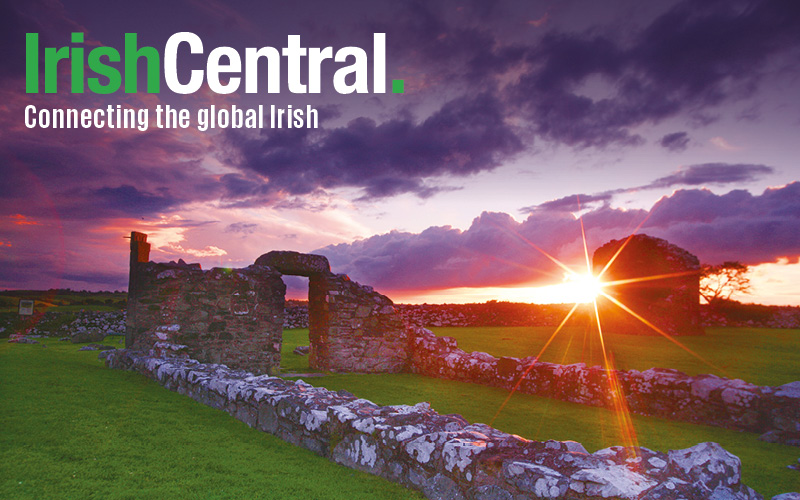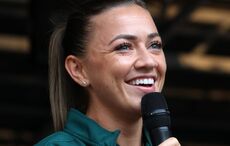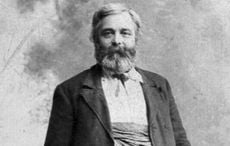If you walk around the hallowed grounds of Stanford University these days, you just might come across a few lads pucking a sliothar about. Seriously.
And if you don't believe that, the first-ever U.S. intercollegiate hurling game took place in February when Stanford lost to Cal State by 3-09 to 3-10. I'm not joking!
Thanks to the curiosity and interest of one student, and the help of a west coast GAA stalwart, the game has taken off in the prestigious school.
Stanford student John Mulrow was so impressed by hurling on a visit to Ireland that on his return he decided to learn how to play the game. After getting educated at the San Francisco GAA information booth at a St. Patrick’s Day event, all he needed now was some coaching.
Cue Eamonn Gormley, San Francisco GAA games development administrator Paul Bayley and other volunteers who started to coach Mulrow and fellow students who liked the look of the game. Soon the sport was off the ground at the university.
Stanford is not the only university to have been bitten by the hurling bug. Two Purdue students who spent time at the University of Ireland Galway returned home and founded a club there in 2005, and California State University at Monterey also got a team together. Berkeley and UCAL are seen as prime locations where the game could flourish.
“College campuses are low-hanging fruit for the GAA,” says Gormley. “It’s a close-knit community in which word spreads fast about new and exciting activities among people who have time on their hands to try them. The disadvantage is that students move on quickly and move to other cities upon graduation.”
For Gormley, a web developer in Silicon Valley, tapping into American interest in the game is key to the survival of hurling in the U.S.
The former public relations officer for the North American Board of the GAA and chairman of the San Francisco Western Divisional Board now spends his time marketing and cultivating interest in young Americans intrigued by the fastest game on earth.
One man whose curiosity was spiked was Brian Whitlow, a lacrosse player who became hooked on hurling. Whitlow joined Irish team Na Fianna, and despite scoring on his debut, found himself on the periphery of the team in the big matches.
So he decided to branch out. With Gormley in his corner for support and recruitment driven by Craigslist postings, Na Sabhaic hurling club (The Hawks), a club founded by Americans for Americans, was founded.
“I saw hurling on TV at three in the morning about 14 years ago, and I was fascinated,” said Whitlow, who plays at full forward. “It was a great and amazing opportunity to be playing with the guys (from Na Fianna), but when Eamonn presented the opportunity to start fresh and take it slow and let time pass to develop our skill, I jumped at the opportunity.”
Whitlow and a core group of eight train and play with Shamrocks Camogie team and are making solid progress.
But cynics may ask, can Americans actually play the game?
“What one man can do, another can do. All it takes is the patience to break the basics down into small bites. Keep at it for a few weeks and eventually it all comes together,” says Gormley.
“Anyone with a background in baseball, lacrosse or even tennis can pick the basics of hurling reasonably quickly. Maybe not as quickly as Gaelic football, but it can still be done.”
But are college teams, more specifically American teams, welcomed by the more traditional Irish teams or scorned upon as a fad?
“I get the impression that there are one or two people would have been cynical about this kind of exercise one or two years ago, but what I have discovered is if you just keep ploughing on and keep persevering with it, eventually they pick up the skills and eventually they showcase these skills on the field,” says Gormley.
“And when you show people what you are capable of then people realize that maybe it is worthwhile after all.”
Hurleys, helmets and sliothars are hardly available at the local sporting goods store, so how are all the players kitted out? Na Sabhaic initially got their equipment from fellow clubs Na Fianna and Naomh Padraig, but now they get their gear from Dave Olson.
When one talks about Olson, who has no Irish blood, one cannot but mention the hurling revolution he has instigated in Milwaukee.
Olson, who was first exposed to Ireland’s national game at the tender age of 30, is the man behind Milwaukee hurling club, which has over 260 members and is one of the biggest hurling clubs in America.
As it says on their website, the club consists of less than 1% native Irish players and welcomes players of all ages and skill levels. Founded in 1996, the club runs a co-ed league every year and was invited to take part in the 2003 North American GAA championship, with the ladies winning three junior camogie titles since and the men taking their first Junior B title last year with about 90 percent of that team American-born.
The club takes all its rookies through a six to eight pre–season drill to learn all the basic skills. The rookies and experienced players are rated on their skill level from one to 25.
This player information and assessment is inputted into a computer program designed by the club that drafts members up into eight equally weighted squads of 20. The co-ed leagues takes place throughout the season, and the top male and female players at the club represent Milwaukee in the North American hurling and camogie championships.
Has Olson seen the skill levels improved over the years?
“Most definitely. By virtue of time on the field with players getting savvier with their training abilities.
“People have said if you are not born in Ireland then you’ll never be a hurler, but hurling is in the heart and not in the blood. In the past four years there has been marked improvement in our skill level, especially among players in the mid-level skill range.”
Olson, who became hurling development officer for the North American GAA Board this January, is adamant that the game can take off anywhere in the country.
“The potential is everywhere. A city like Milwaukee, with 1 or 1.1 million, if we can do it all the other cities can do it,” he says.
“If soccer and lacrosse can do it then hurling can do it. It is just a matter of getting the sport out there with public relations and a few core bodies moving out on the field, and American-born and other cultures will pick it up. In Milwaukee we span all cultures.”
Back In San Francisco, Na Sabhaic, like any other club, sees players come and go. One, Colm Kenny, is leaving San Francisco for San Diego but has no plans for giving up hurling.
“I want to start a San Diego club because I’m moving there for school/marriage, and was bummed to hear there was no Irish-born team there, let alone an American born team,” he says. “But with San Francisco and Portland teams starting, and a Seattle club well established, it seems like it might have a shot.”
San Diego has a Gaelic football team, but this will be the first attempt to bring organized hurling to the area. For Kenny the game offers many challenges.
“We learn to swing a bat and golf club one way, and swinging from the other side is really awkward. I imagine lacrosse players would have an easier time, as using both sides is encouraged more in that sport. Also, running full sprint with the ball balanced on the stick is hard as well.”
With numbers from Ireland emigrating to the U.S. dwindling, the willingness of coaches to reach an American audience and the enthusiasm of Americans who pick up the game is vital to the game’s continued success here.
While no one is expecting an American Henry Shefflin to be unearthed in the next year or two, the American players who learn and embrace the game now can lay the foundation that may produce players of such skill down the line.
One has only to look at the development of soccer in America as a model. It was all well and good for immigrants to play soccer, but only when young Americans took up the game did its popularity explode.
That is not to suggest that hurling can reach the same level, but with the success of organizations like Milwaukee hurling club and the advent of clubs like Na Sabhaic in San Francisco and the students at Stanford, hurling may yet find its niche in the American sporting lexicon.




Comments